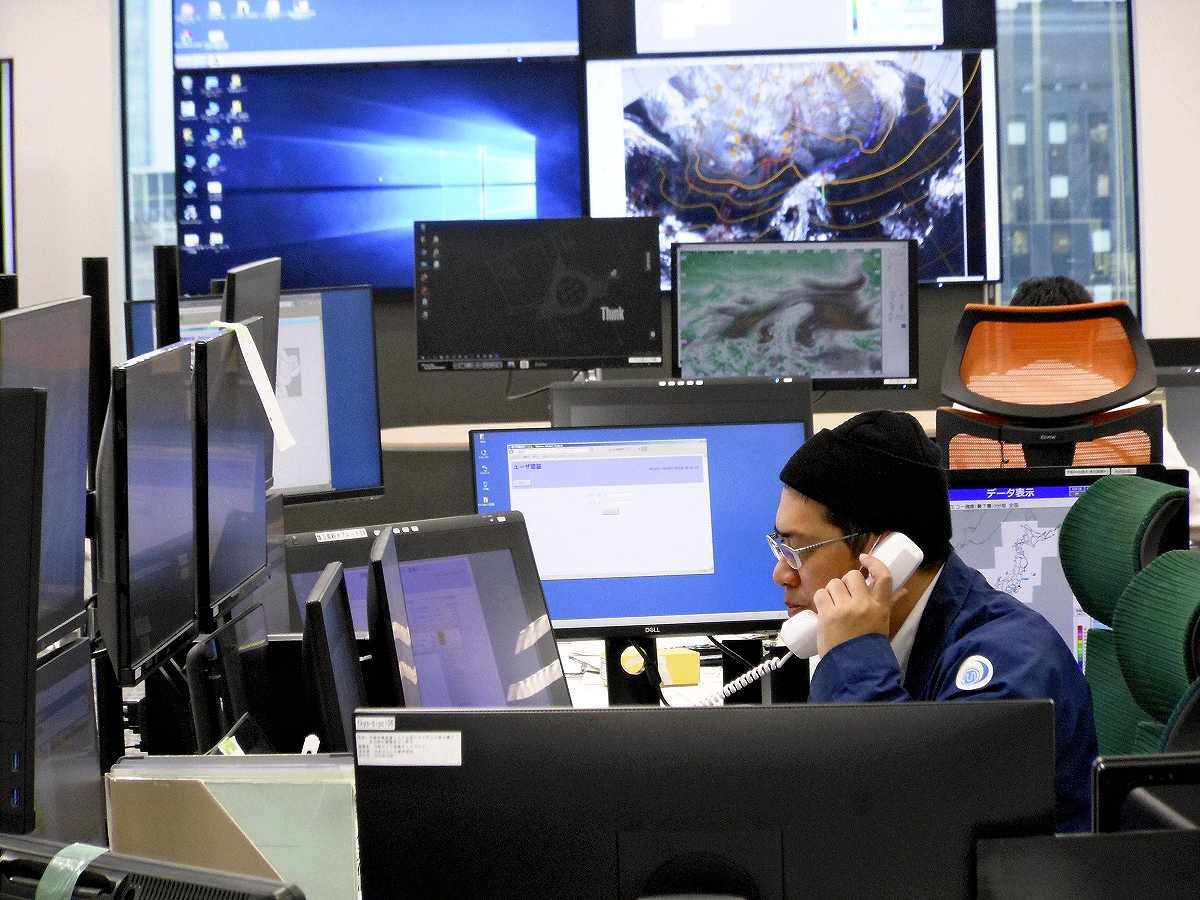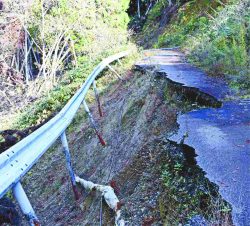
The new building of the Japan Meteorological Agency in the Toranomon district in Tokyo. It is equipped with the latest disaster prevention systems and is close to the Prime Minister’s Office.
15:50 JST, November 28, 2020
The Japan Meteorological Agency has begun its relocation to a new main building in Tokyo, after using its current building for more than 50 years since its construction. The agency is relocating in stages from its current site near a moat northeast of the Imperial Palace in the Otemachi district in Chiyoda Ward, Tokyo, to a newly constructed building to the south of the palace in the Toranomon business district in Minato Ward.
The old and new locations are about three kilometers apart. The relocation is set to be complete by the beginning of December.
Since the agency’s office is a central hub for disaster management, the relocation is being carefully carried out so as not to interrupt the flow of vital information.
The Otemachi building has been in use since 1964, but it was decided in 2007 to relocate the agency as part of the central government’s plan to reposition major government buildings. The new building, with 14 floors above ground and two floors underground, was built on the former site of an elementary school at a cost of about 24.1 billion yen.
The Toranomon district near the Prime Minister’s Office and the central government district is also the birthplace of the Tokyo Meteorological Observatory, the predecessor of the agency, which was established in the early days of the Meiji era (1868-1912).
Construction of the new building was completed in February, but the relocation work began only earlier this month following the end of the rainy and typhoon seasons. In the relocation, costing as much as 1.8 billion yen, about 800 two-ton truckloads of goods and materials as well as 1,300 employees will move to the new office building in the space of one month.
Smooth relocation of systems

Japan Meteorological Agency personnel work at the weather disaster prevention operation room, where national weather data is managed, at the agency’s new building in Minato Ward, Tokyo, on Nov. 25.
Although storm and flood damage is rare at this time of year, earthquakes and volcanic eruptions can occur at any time. Therefore the agency’s Seismology and Volcanology Department, which monitors earthquakes and tsunamis 24 hours a day via about 6,600 seismometers and other facilities nationwide, will ensure the uninterrupted operation of emergency earthquake alert and tsunami warning functions during the relocation.
Because moving such systems from the Otemachi building to the new Toranomon location could cause an interruption in information transmissions during the relocation, relevant systems at the Otemachi office building and the Osaka District Meteorological Observatory were transferred to the new office building one by one without interfering with usual operations. That enabled the systems to temporarily function at both the Otemachi and the new buildings, avoiding any “blank time.”
Koji Aizawa, assistant division chief of the agency’s Earthquake and Volcanic Engineering Affairs Division, said the system cannot be paused even for a moment since it is directly related to the lives of the people. “It is good that the system was switched over without being noticed,” he said.
“No matter what disaster strikes, this building will continue to do its job of protecting the lives of the people,” said an official of Taisei Corp., which was in charge of the construction of the new building.
Earthquake shock absorbers were not installed in the Otemachi building, although the building met the highest quake-resistance standards. The new building is equipped with the latest disaster prevention equipment so that operations can be continued even in the event of an earthquake directly beneath the Tokyo metropolitan area or large-scale flooding in Tokyo.
In addition to quake-absorbing devices designed to protect the entire building from horizontal shaking, special systems designed to reduce vertical shocks are installed on the floor where an operations room, working as a control tower in charge of weather forecasting among other functions, is located. The systems are said to enable the building to withstand tremors twice as strong as those likely to be caused by an earthquake anticipated to occur directly beneath the Tokyo metropolitan area.
The building is also equipped with its own electric generator that can enable the agency to continue operations for one week in the case of a blackout, plus fuel and water storage tanks. Telephone and electric wires were doubled to prevent disconnection.
Speaking at the first press conference at the new office on Nov. 18, agency Director General Yasuo Sekita said “We will work together to achieve an even higher performance.”
"Society" POPULAR ARTICLE
-

M4.9 Earthquake Hits Tokyo, Neighboring Prefectures
-

Israeli Tourists Refused Accommodation at Hotel in Japan’s Nagano Pref., Prompting Protest by Israeli Embassy and Probe by Prefecture
-

M7.5 Earthquake Hits Northern Japan; Tsunami Waves Observed in Hokkaido, Aomori and Iwate Prefectures
-

Tsukiji Market Urges Tourists to Avoid Visiting in Year-End
-

M5.7 Earthquake Hits Japan’s Kumamoto Pref., Measuring Upper 5 Intensity, No Tsunami Expected
JN ACCESS RANKING
-

Keidanren Chairman Yoshinobu Tsutsui Visits Kashiwazaki-Kariwa Nuclear Power Plant; Inspects New Emergency Safety System
-

Tokyo Economic Security Forum to Hold Inaugural Meeting Amid Tense Global Environment
-

Imports of Rare Earths from China Facing Delays, May Be Caused by Deterioration of Japan-China Relations
-

University of Tokyo Professor Discusses Japanese Economic Security in Interview Ahead of Forum
-

Japan Pulls out of Vietnam Nuclear Project, Complicating Hanoi’s Power Plans
























